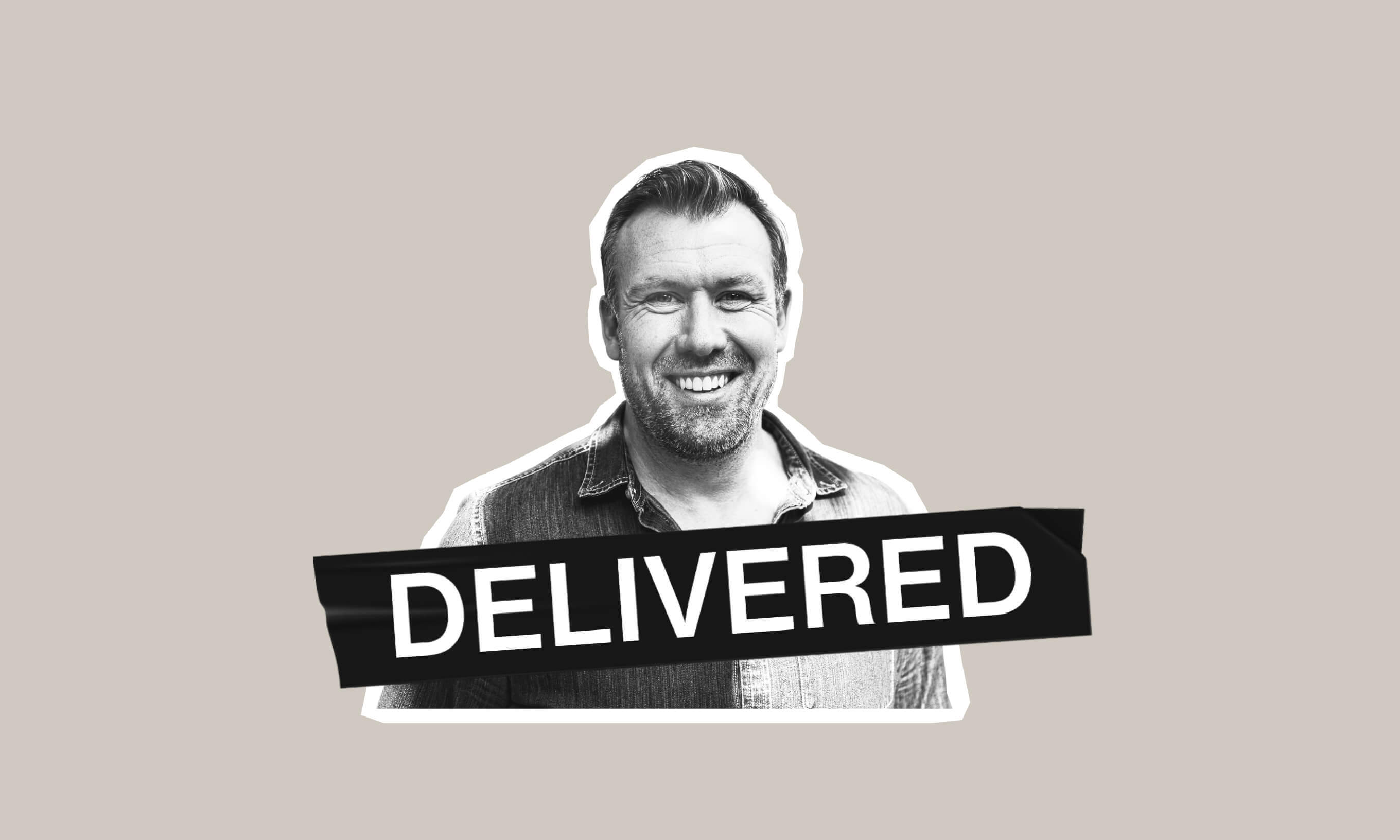A successful SaaS entrepreneur, Mark McDermott, appears as a guest speaker in our event series Delivered and shares valuable lessons on building a successful SaaS business, drawing on his 20 years of experience.
In the fiercely competitive SaaS market, only a select few make it to the top. CEO of ScreenCloud, Mark McDermott, is one of them. With a series of strategic decisions, he transformed his company into a standout player in the digital signage industry.
This journey was not without its ups and downs. Some key business decisions were at play in turning ScreenCloud into a globally trusted platform serving over 9000 businesses worldwide.
As a guest speaker in our online event series, Delivered, Mark shared the most important lessons he learned along the way.
To make waves, you’ve got to catch a wave
To understand the key business decisions behind ScreenCloud’s success, let’s dive into the importance of timing and being attentive to market trends. Mark draws a comparison with surfing. First, you need to spot a wave and then time your actions correctly to ride it successfully. In business, the same principle applies. Identifying an opportunity is not enough, you must also act at the right moment to make the most of it.
“Where we did well in ScreenCloud was what I call ‘surfing waves’. Just like in actual surfing, spotting a wave is the easy part, but timing it correctly is the real challenge. Even if you spot it, you can still make mistakes by acting too early or too late. Going too early is often more detrimental than going too late because waiting for the market to catch up can be quite painful.”, explains Mark.
However, timing is only one piece of the puzzle. Success also hinges on your ability to adapt and bounce back in the ever-changing SaaS landscape. This calls for resilience and the flexibility to acknowledge shifts and recalibrate your strategies accordingly.
Achieving and maintaining product-market fit
Ask any SaaS founder what keeps them up at night, and they’ll most likely tell you it’s the challenge of achieving product-market fit. But Mark has a success formula, and it’s called the “core and explore” principle.
The concept of “core and explore” is a strategy to allocate product design and development resources effectively, with 80% focused on the core, which includes the current roadmap, and 20% dedicated to experimental down-the-road ideas.
This approach ensures a balance between meeting current market needs and staying ahead of emerging trends to sustain long-term success.
The best UX is no UX
ScreenCloud’s journey to becoming a market leader was deeply rooted in their commitment to user experience (UX) and their ability to adapt the product based on real user feedback. They understood that a great user experience is one that feels seamless, intuitive, and almost invisible to the user. “The best UX is no UX,” says Mark.
UX goes beyond wireframes and visual design. What truly matters is the overall experience and creating magic moments for the users. Anticipating their needs, removing unnecessary steps, and focusing on the overall flow of the product.
For ScreenCloud, this meant keeping things simple. For example, they followed the UX principle of using minimal buttons and real-time updates. This helped them create moments of delight and magic in a trial and, ultimately, close more customers.
Embracing flexibility to drive innovation
Despite having a clear initial product strategy, sometimes unforeseen issues arise. However, those issues might not be what customers even care about. Mark faced such a challenge when his product initially didn’t work well on mobile. But in the end, his customers didn’t care. That’s why it’s important to continuously improve and adapt the product based on real customer feedback.
While feedback from bug reports and support tickets can be helpful, witnessing how the product is actually used by end users provides better insights into their needs and pain points.
“You truly start to learn what matters to your customers when you go out there in the real world and actually witness the product usage in the real environment. This is even more crucial if your customer isn’t the end user”, explains Mark.
Strategy is the big picture, the long-term vision for the product, and it should remain relatively stable even as the business evolves. On the other hand, plans are the specific actions and tactics taken to achieve that strategy, and they are more flexible and subject to change based on feedback, market shifts, and new information.
Succeeding in the SaaS landscape means finding the right mix between having a clear vision and being open to adjustments as you develop your product.
What it takes to be a great SaaS leader
The role of CEO in a SaaS business should be one of a product owner, not a micromanager, claims Mark. You need to find a balance between guiding the team with a clear vision and allowing autonomy for creativity within the development process. By adopting a product owner mindset and allowing the development team to take ownership of the product development process, SaaS businesses can create a more productive and innovative work environment.
Effective SaaS leadership involves representing the customer’s vision, fostering a creative and autonomous work environment, and facing challenges with determination and courage.
“As the CEO, my job is to talk to as many potential customers as possible, gather market insights, define our positioning, and ensure my product team is working in line with that. But what’s even more important is granting my team the autonomy to do their best work. People who get into this game do it for the love of building and creating. If you stifle that, you suck the oxygen out of the room. I know that’s scary, especially when you’ve invested your life savings into the company and you want it to succeed. But you have to get over that fear, or you’re bound to fail”, concludes Mark.
If you’d like to learn more about the role of UX, user feedback, and product strategy in the journey of building and scaling a successful SaaS business, watch the full episode.










